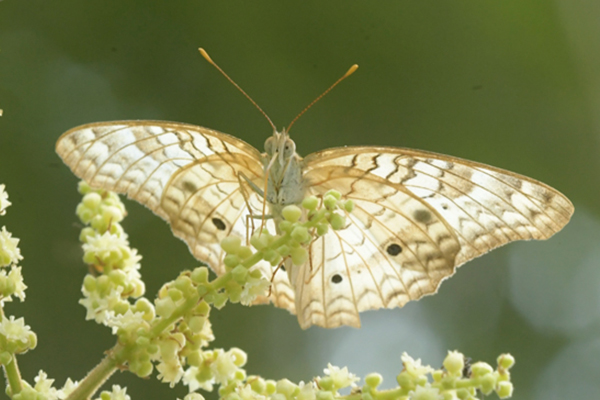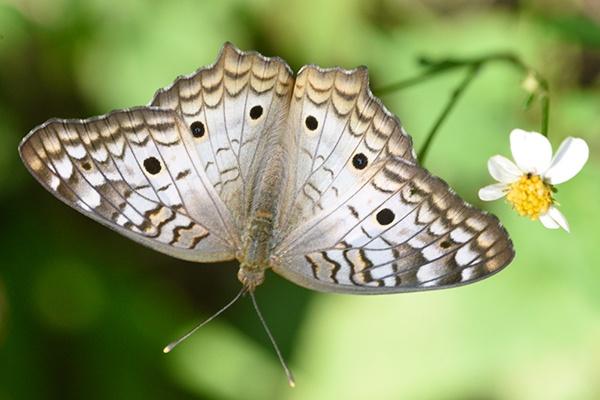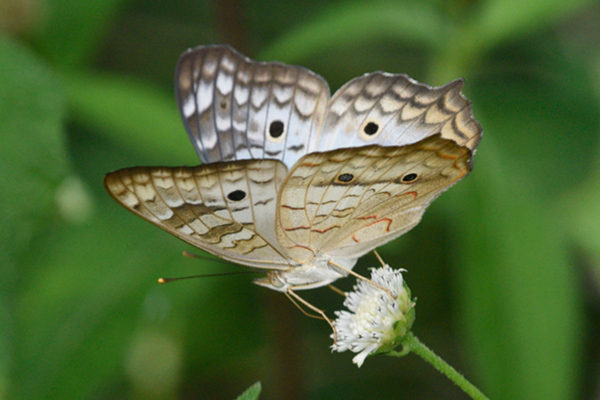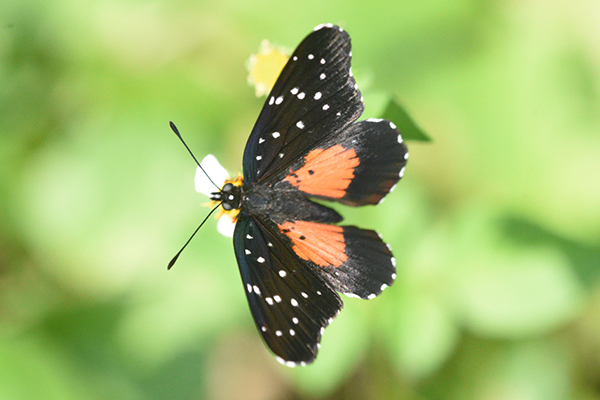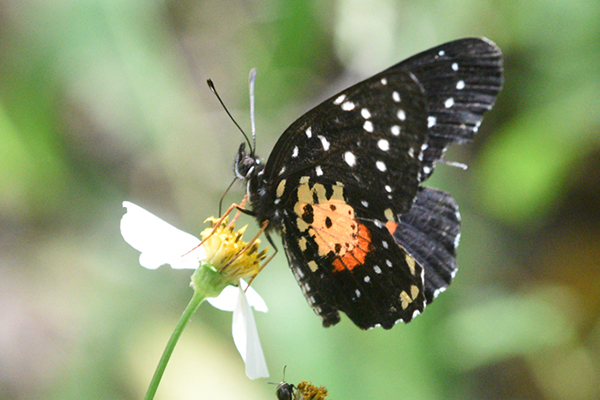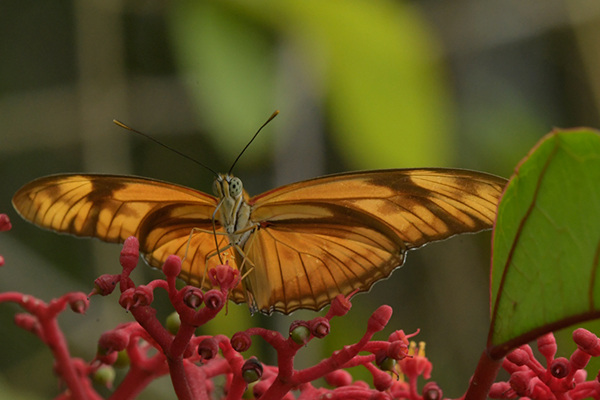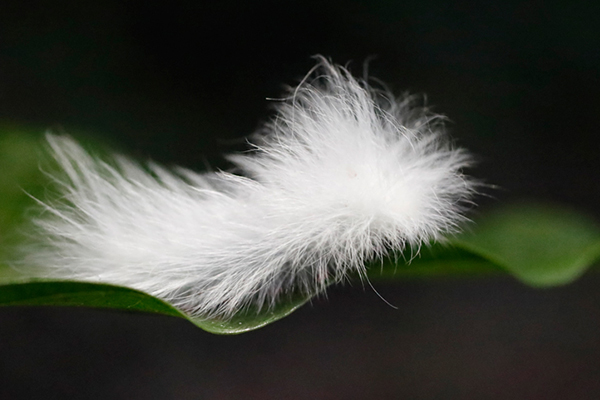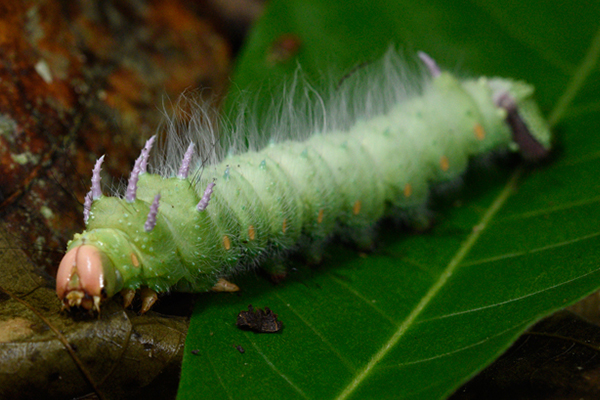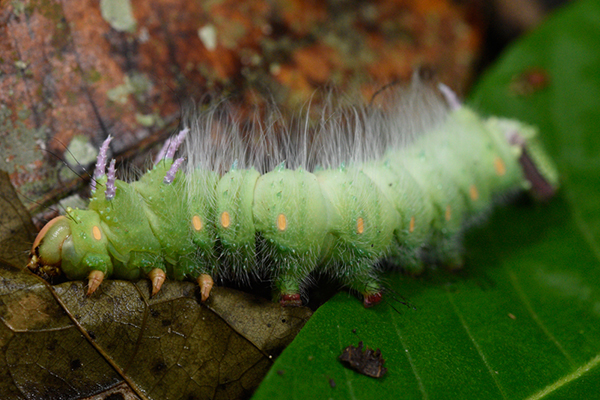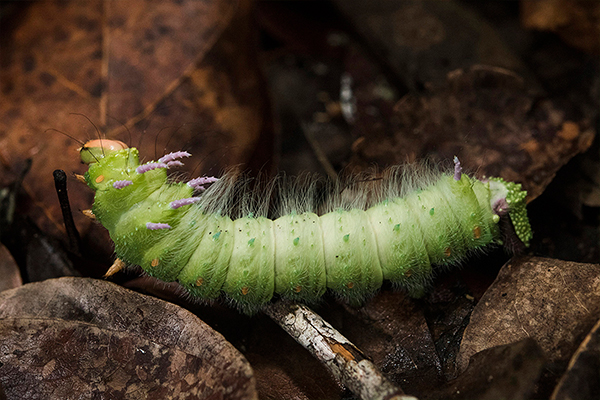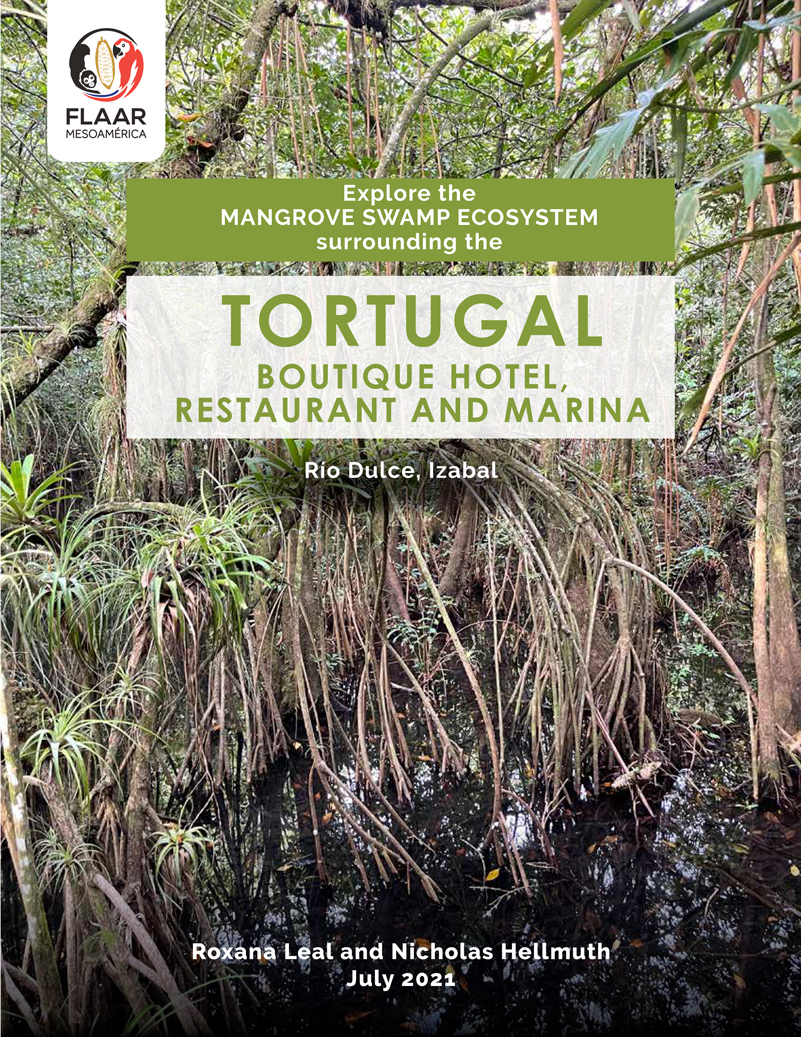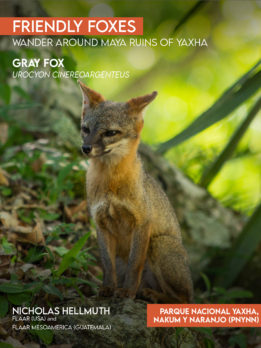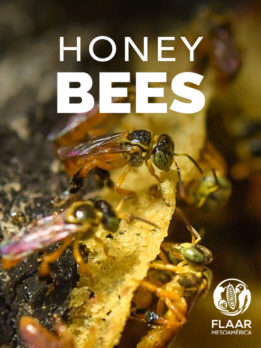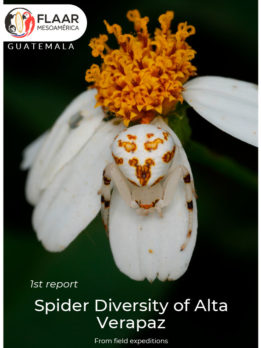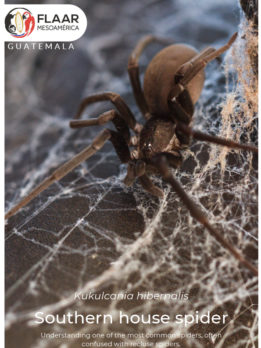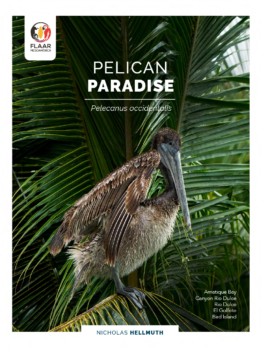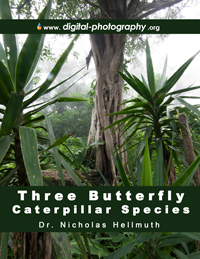Yaxha (PNYNN) is great please to photograph happy friendly butterfly pollinators
Every day we walked around the edge of Lake Yaxha (below the museum, in the area for free camping) we found butterflies all over the place. We did field work at Yaxha to find, photograph, and document plants and animals one-week-per-month for 12 months during 2018-2019. This project was coordinated together with the joint administrators of the PNYNN (IDAEH and CONAP).
In a national park the flowering plants are protected. The more flowers the more pollinators: so lots of butterflies at Parque Nacional Yaxha Nakum Naranjo. You can also find lots of stingless bees and other insect pollinators. Plus hummingbirds and many other birds that are capable and helpful pollinators (orioles and oropendola are good examples).
The micoleon, known in USA as kinkajou, Potos flavus, is the largest mammal that is a pollinator (especially of flowers of the balsa tree). Other mammal pollinators are bats (especially of flowers that open in the early evening, such as Ceiba pentandra flowers.
All these pollinators you can find if you visit Parque Nacional Yaxha Nakum Naranjo (PNYNN). Obviously every month the pollinators depend on which flowers are blooming in that particular month.
We estimate you can find beautiful butterflies fluttering around almost the entire year. If you stay at Hotel Ecolodge El Sombrero you will see them in their garden, and around the parking area, and in the rest-and-relaxation area facing the lake.
If you are camping at Yaxha itself, you will see them every morning between the soccer field and the lake and in pretty much all areas around the camping area.
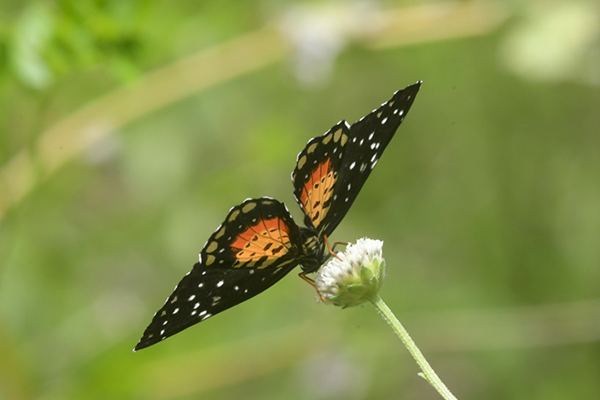
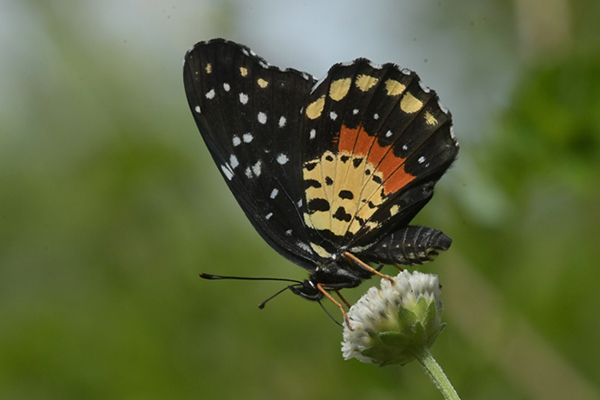
Common local butterfly, possibly Chlosyne lacinia, Naranjo sector of PNYNN, in cibal (between savanna and jimbal area, west of the western acropolis).
Photographs by David Arrivilaga, Nikon D5.
You can also find and photograph a lot of butterfly larva
I have to ask a butterfly expert which larva is a moth and which is a butterfly. But either way, if you are good at spotting these creatures, you can find them at Yaxha, Topoxte Island, Nakum, and Naranjo areas of PNYNN. They come in many shapes and colors. Best if you do not touch them.
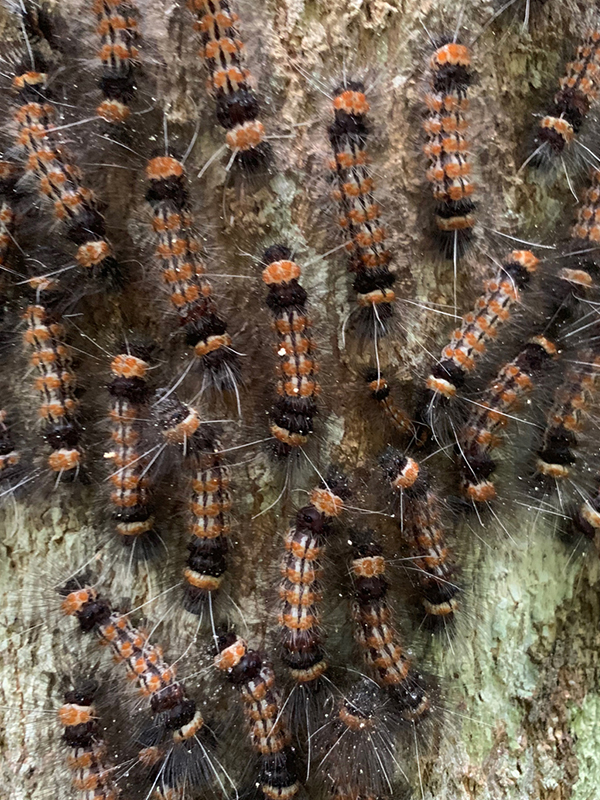
Often you get masses of larvae all on one tree trunk. We have seen amazing examples on trees of Copan Ruinas, Honduras. Here is an example along 4WD trail from Naranjo sector of PNYNN north to Rio Holmul. Photograph by Nicholas Hellmuth.
You can find masses of Yellow butterflies on wet mud areas at Yaxha park
Flat areas with wet mud attract the yellow colored and the orange colored butterflies. All over Peten and Alta Verapaz, along a river shore or along a trail with open areas (no grass) with flat dirt that is a bit moist, you get dozens of butterflies in a group. These are normally butterflies whose wings are just one color (whitish-yellow, yellow, or orange). Often there will be butterflies of different groups (but most of these mud-loving butterflies are not multi-colored). But, like everything in nature, there are exceptions: sometimes you see dark banded winged and other multi-colored butterflies mixed in. Obviously depends on whether you are in Texas or Oaxaca or Peten.
This common presence on mud is called mud puddling.
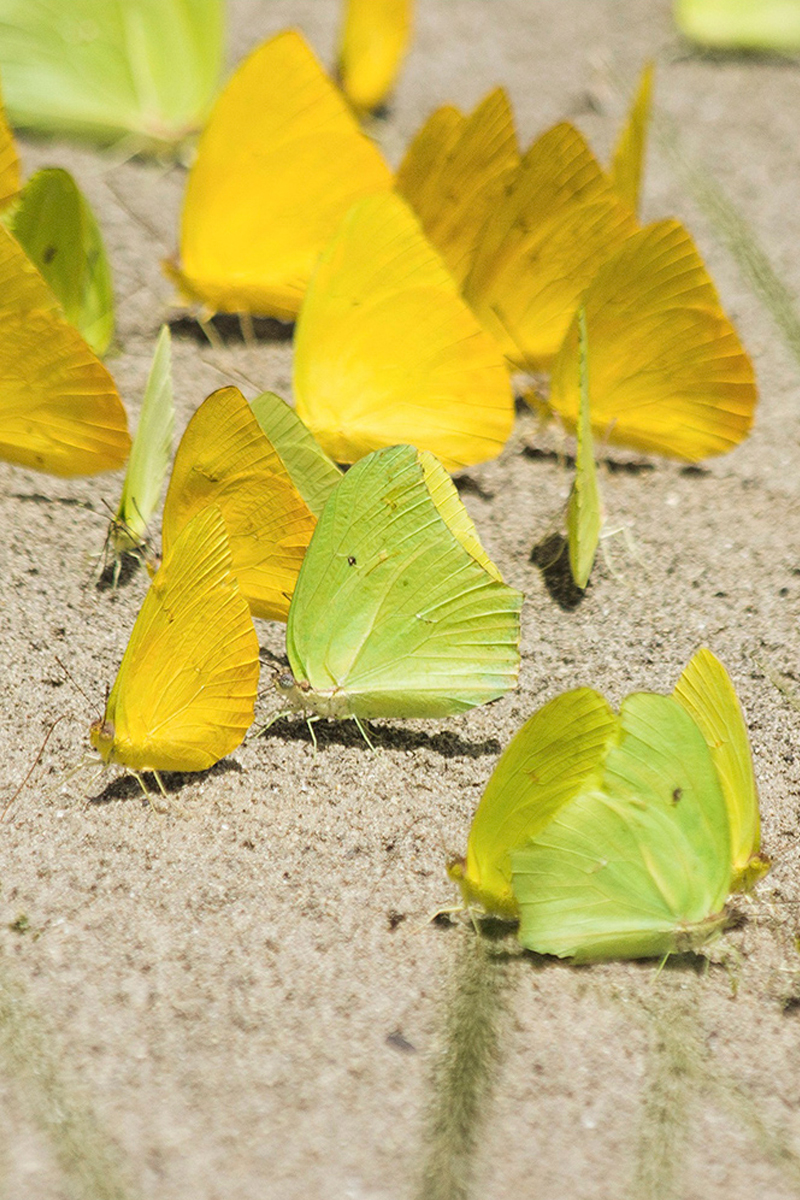
We found butterflies mud puddling along the shore of Rio Ixtinto, which is behind Topoxte Island, at the southwest part of Lake Yaxha.
We would like to prepare a book on all butterflies at the Yaxha park
The butterflies we show here are only a fraction of the species you can see at Yaxha. And at night you get lots of moths working to pollinate flowers that are open at night. Would be great to have a photo album showing each species, with their scientific names and common names, of every butterfly. The blue monarch butterfly is happily fluttering around the park but usually flies so fast (and so erratically) that they are a challenge to focus and photograph.
Lots of other pollinators at the Yaxha Nakum Naranjo national park
Bees, bats, and birds are pollinators in addition to butterflies and months. Beetles and other insects also. Would be great to have infographic posters showing all the diverse pollinators in one well designed poster. Then each individual species, one poster at a time.
Then a photo album to show all the pollinators.
PNYNN is POLLINATOR PARADISE. You will be attracted here by the temples, pyramids, acropolises, ballcourts, and causeways. And you will definitely want to experience the sunset (remember, there are six different areas to watch and photograph the sunset; so five areas in addition to Temple 216). But while you are here, we of the flora and fauna research team, in cooperation with the co-administrators of the park (IDAEH and CONAP) would like to provide information about everything else at this park that you can enjoy learning about, with pollinators being one good example.
How to get to Yaxha park?
Fly to Mundo Maya International airport in Santa Elena (facing the island of Flores). Aeropuerto Internacional Mundo Maya. There are guides, vans, all waiting for you outside the terminal.
Take a bus from anywhere in Guatemala to Santa Elena, San Benito, or Flores (depends where the bus station is; then take a tuk-tuk to a bus to take you towards Belize). At La Maquina (between Flores and the Peten-Belize border at Melchor) is the turnoff to the north. I have walked this 11 or so kilometers (from La Maquina to Yaxha) but you will probably want to try to hitch a ride. There is no scheduled bus service for this turn-off (but if clever you can hitch a ride on a pickup truck or in a tour bus if lucky).
There are places to camp at Yaxha. The nice hotel where we stay is at left of entrance to the park, Hotel Ecolodge El Sombrero. We know the owner for over half a century.
Helpful websites with photos or mention of comparable butterflies that are mudpuddling
Google mudpuddling butterflies and you will find a lot to entertain you. Below we list one example.
First posted August 2020


